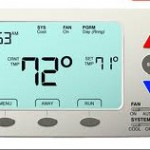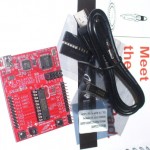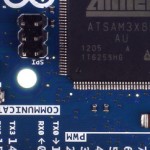Making the decision to create a new product or the next generation of an existing product is always an exciting time for design engineers and hopefully the entire organisation. There’s always new features, options and technologies that can be integrated for the perceived benefit of the end user.
However as technology marches on, there is the possibility of going too far. At first that may seem like an odd statement, however considering the complexity of some products you may wonder how they’re comprehended by the end-user, let alone sales staff. This phenomena is also prevalent in the Internet-of-things arena, where “features” and usability can get out of hand.
Let’s consider the potential dangers of over-engineering and feature overcomplexity when bringing an Internet-of-Things automation or embedded sensor appliance to the market. With advancements in available technology, increasing miniaturisation and decreasing costs of sensors and components it’s tempting for more and more features and capabilities to be added to your device or product design, just to make your product “the best” or to satisfy the “because we can” motivation of the engineering team.
However, it can be important to keep this kind of over-engineering or “feature creep” under control in order to deliver a product that is easy for consumers and salespeople to understand and offers simple, sensible, intuitive user experience with a sensible amount of functionality – not too little and not too much – from a hardware system that is small enough and simple enough that it can practically be manufactured and offered to the market at an acceptable price for good consumer uptake.
Sure, your design might be “the best” from a technology standpoint, but what if the “best” hardware is significantly more expensive than the competitor’s not quite as whiz-bang product and your design is not considered financially attractive to consumers relative to the level of functionality that the users actually want?
It’s pointless to try and invent more and more features just because it is technologically possible to do so if those features don’t actually accomplish anything that is actually valuable to consumers. For example, providing a washing machine with Internet-of-Things connectivity and remote access and control via email or a smartphone application is quite pointless since a human operator actually needs to be there to load and unload the clothes from the machine.
The features and user experience should be kept intuitive and usable, without dragging the user down into an insane range of different options that most people are probably never going to use most of the time anyway.
Internet-of-Things sensor networks and appliances targeted at home and building automation should be easy to set up and configure, they should be compatible with existing typical household network infrastructure such as single-band 2.4 GHz 802.11b/g Wi-Fi access points (5 GHz might be technically “better”, for example, but users don’t want to upgrade all their existing access points just to use your gadget), and they need to be compact, visually unobtrusive – and as simple as possible in order to keep the hardware cost at a level that is sufficiently small for market acceptance.
This is particularly true for appliances that are designed for use as a network of many distributed devices – the cost of the total set of all the hardware devices needed for a typical network deployment needs to be kept at a reasonable level so that the entire usable system is available to consumers at an overall price point that they’re willing to pay. For Internet-of-Things networks consisting of meshes of multiple wireless devices to become ubiquitous, each node device needs to be as cheap and as small as possible.
For example, suppose that you release a smart email-controlled Internet-of-Things light bulb onto the market and it costs $100. Will customers replace their existing light bulb, which costs say $5, with your new $100 light bulb with the added convenience of control from your PC? Well, some consumers might try a single light bulb or two just to experience the relatively novel idea of a consumer-focussed household Internet-of-Things appliance.
However very few customers are likely to consider it worthwhile to set up a network of a dozen hundred-dollar bulbs to replace every bulb in the home. Such a system might pick up a few customers – the relatively wealthy technology fans who want to be early adopters of advanced, relatively complicated home automation and Internet-of-Things technologies, even if the price is high. But isn’t it better to have a product that is desirable for a broader market beyond just those who are willing to pay lots of money for the most powerful, advanced technology on the market?
Furthermore, realistic testing of your product’s usability and user experience is vital during the development process. Adding too many features can befuddle customers as well as befuddling salespeople whose job it is to help convince customers to buy your product and to demonstrate its user experience with consumers. Over-engineering and feature creep, even if it’s possible to integrate lots and lots of features from a technical engineering standpoint, can negatively affect sales as well as affecting your brand reputation.
The best user interface is “no user interface” – a user interface design that approaches the theoretical ideal of being completely transparent and natural in its interaction with the user. Similarly – although I know it might sound risky – the best documentation design is “no documentation”, or something approaching it. The ideal product is so intuitive and natural in its user experience that it just kind of “documents itself”, with little or no documentation really required. This means that the amount of documentation that the customer needs to read is minimised as well as minimising the amount and the cost of documentation that the manufacturer needs to print for every unit shipped.
With hindsight you can examine your own existing products and that of your competitor’s, and with a fresh perspective perhaps consider how things can be simpler for the end user without sacrificing usability. This is a simple step to initiate, however it can require a total redesign or approach from a fresh set of minds.
As part of our complete product design service, here at the LX Group we can partner with you to work on revisions of existing products or bring new ideas to life. With out experience in retail and commercial products we have the experience to target your product’s design to the required end-user market and all the steps required to make it happen.
We can create or tailor just about anything from a wireless temperature sensor to a complete Internet-enabled system for you – within your required time-frame and your budget. For more information or a confidential discussion about your ideas and how we can help bring them to life – click here to contact us, or telephone 1800 810 124.
LX is an award-winning electronics design company based in Sydney, Australia. LX services include full turnkey design, electronics, hardware, software and firmware design. LX specialises in embedded systems and wireless technologies design. https://lx-group.com.au
Published by LX Pty Ltd for itself and the LX Group of companies, including LX Design House, LX Solutions and LX Consulting, LX Innovations.




